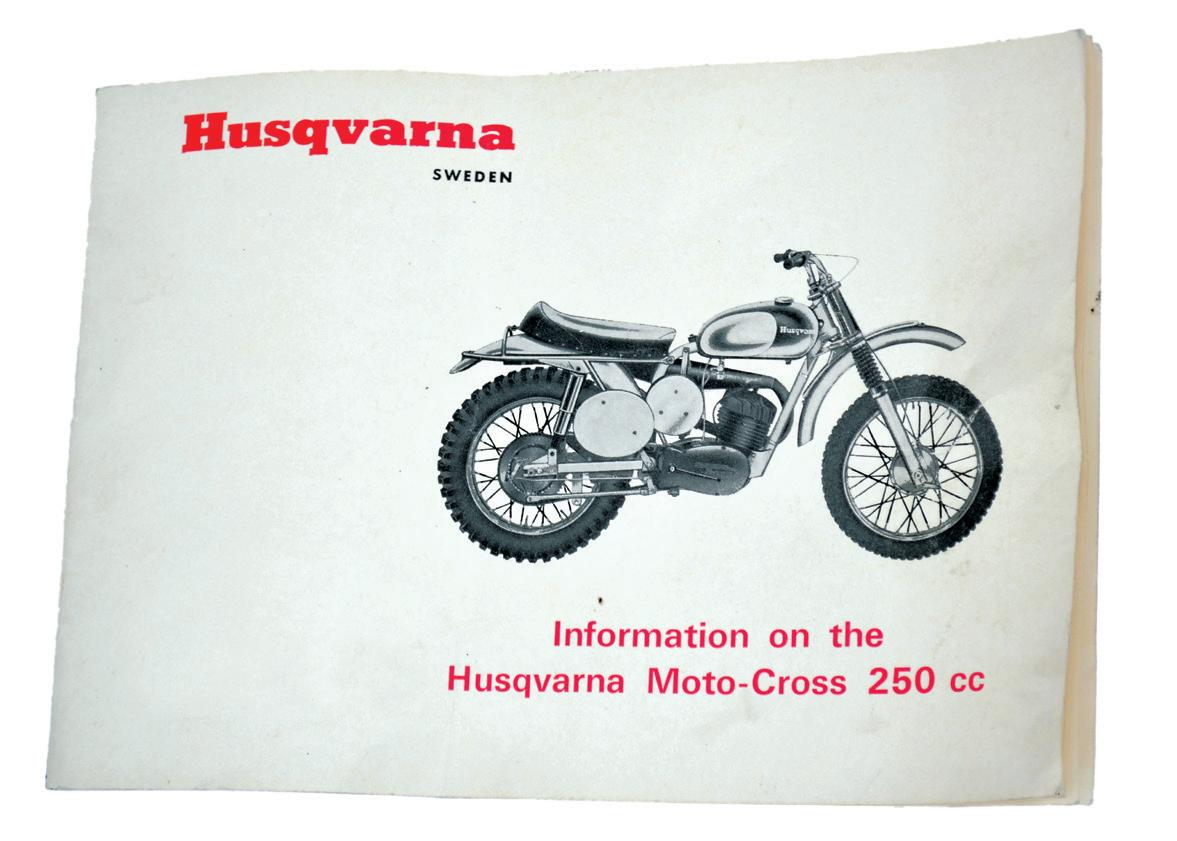
3 minute read
malcolm’s moments RACING AND RETAIL
Selling Husqvarnas was every bit as great as racing them
BY MALCOLM SMITH
There were a few twostrokes being raced in the desert in 1966 — Greeves, Cottons, maybe a Bultaco or Montesa or two — but most were big British twins — Triumphs and BSAs, mainly — and
Part Eleven
some single-cylinder Gold Stars and Matchlesses. We called ’em Desert Sleds…big, heavy, powerful bikes that traded power for lightness and handling.

They were fast but didn’t work so well in the desert, wallowing through the sand rather than on top of it. My lightweight Husky, however, was basically a motocross bike with taller gearing, and therefore able to skate across the sand. It accelerated quickly and stopped on a dime, which made it a far better handler, and it was reliable, too…not something you could say about the other 2-strokes of the day. All in all, a great desert bike.
That first race in the Lucerne Valley went well. I got third overall, the bike’s weight and handling allowing me to ride wide open just about everywhere. I was a pretty aggressive rider normally, but the Husky allowed me to ride even faster through the rough stuff —though on occasion I’d got close at the end, but I held on for the win. It was a big deal for me, beating my hero. And while I knew Ekins would have won had he been on a Husky, it still felt great.
Edison Dye was obviously happy with the wins and exposure, and with 50 or so crates of Huskys headed to Los Angeles, the timing of all this pro-Husky attention was excellent. Knowing how good the bike was, just like that I became a Husky dealer — of sorts. get bucked off the seat, my feet up in the air, and sometimes the bike would swap terribly from side to side. But I’d hang on anyway.
There were no other Huskys in the race, not one, and I distinctly remember thinking halfway though the event that I’d stumbled onto something very special with this motorcycle, and that many riders would eventually want one.

That feeling continued the following weekend at another event in Lucerne. I won the overall, and it felt like cheating the whole race. I was amazed how easy the bike was to ride, and as I watched the other bikes dig and spin and throw sand as I rode by them, I knew this was clearly a very special motorcycle.
I won again in my third race at a place called Texas Canyon. I remember coming up on Bud Ekins, who was leading. I’d never raced against my boyhood hero before. The Husky’s light weight and amazing tractability allowed me to run along the narrow canyon walls and out of the sand, where Ekins’s four-stroke was chugging and struggling. I went by him, but 15 miles from the finish I got a rear flat. There was no way I was going to lose the race, so I kept the throttle pinned, swapping and sliding all over the place. Ekins and how much sales potential it had, I sensed a business opportunity. Dye had tried to get Kenny and Norm to carry Huskys at their K&N shop, but with Yamaha and Greeves 2-strokes already being sold there, and considering Norm’s relationship with Yamaha (the company would soon sponsor part of K&N’s race team), the guys passed on the Husky opportunity.
When Dye told me this, I saw my opening, and went to Norm with the idea to allow me to sell Huskys on the K&N sales floor — on consignment. After every Husky sale I’d pay the K&N salesman a commission, split the remaining profit with the store, and send Dye a check for the wholesale amount. Norm agreed, and
And it worked! Huskys began to sell right away, weekenders and racers learning quickly that Huskys weren’t only fast and light, but also extremely reliable. And as more and more of them got purchased and ridden and raced, the demand for spare parts began to increase despite the fact that the bikes were so well-engineered. Over time I began to sell parts — pistons, rings, plugs, gaskets, bearings, levers, pegs, etc. — at the races, direct from a straight-six Dodge van I bought for just that purpose. I built cabinets inside the thing and stocked all the parts I could get from Dye, selling them before and after each event. I’d go early and stay late, and things got busier by the month.
Guys would buy parts and then want another bike. And then they’d tell their buddies how good Huskys were, and I’d eventually see them down at the shop. If their bike needed work, I’d take it with me and they’d come get it at the shop once it was fixed. For really good customers, I’d deliver their bikes to the races the following Sunday.
I soon had a waiting list for bikes, most of which were pre-sold. A few crates would arrive, and the bikes would be out the door as soon as I’d assemble them. There were only a handful of dealers in the western U.S. at the time, so business was good. But soon another chapter of the Malcolm Smith and Husqvarna story would be written: International ISDT competition.
Left:
For the complete story of my wonderful and sometimes-crazy life, grab a copy of my 400page autobiography at themalcolmbook.com.










